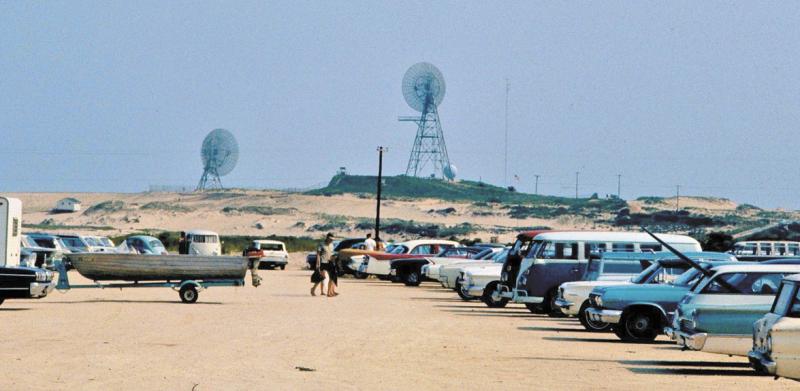Cape Henlopen has long been strategically important to the United States.
A quarantine station, naval radio station and experimental gun emplacements had all operated from the area beginning in the 1800s. And as war brewed during the 1930s, U.S. military planners began to worry about attacks against the Delaware Bay and River. The Army decided a new defensive installation was needed. Construction began in March of 1941, and five months later the base was named Fort Miles. Eventually the fort would house more than 2,000 people, cover over 1,000 acres and cost $22 million to build – equivalent to $420 million today.
During the war, 12 groups, or batteries, of artillery operated at Fort Miles, including 3-inch and 90-millimeter anti-air/anti-motor torpedo boat guns, 155-millimeter and 6-inch gap-filler guns, 8-inch railway guns, and 12-inch and 16-inch anti-battleship guns. A total of 15 fire control towers were erected to spot targets, with 11 towers on the Delaware coast and four along Cape May, N.J. This system was meant to provide a layered defense against enemy warships.
As the war progressed, a different danger emerged: German submarines, known as U-boats. To thwart U-boat attacks locally, 455 sea mines were planted across the entrance of the bay. Maintaining the minefield became one of the major tasks at Fort Miles, and one that could be hazardous, especially in bad weather. Fortunately, Fort Miles never had to use any of its weaponry against an enemy.
Activity at the fort did not end with World War II. In 1946 and 1947, the U.S. Navy used what is now known as Herring Point as a testing area for Project Bumblebee, its first attempt at creating a fleet defense missile. Missiles quickly became a powerful part of the United States’ anti-aircraft defenses.
To better coordinate them, the Army began the Missile Master program. Missile Master used radar networks to detect threats and assign missile batteries to counter them. By 1959, a radar dish had been installed on top of Battery 519. The Missile Master system ended in the 1970s, and the radar dish was removed.
The U.S. military was also worried about Soviet submarines. During the 1950s, the Navy developed the Sound Surveillance System, a collection of underwater microphones that fed into shore-based naval facilities where personnel could analyze the sounds that were picked up. With training, these sailors could locate and track enemy submarines. NavFac Lewes operated from what is now the Biden Center and Herring Point until it closed in 1981.
Activity at Fort Miles slowed with the end of the Cold War. By 1996, all military land at Cape Henlopen had been incorporated into Cape Henlopen State Park. Although the fort never saw combat, the men and women who served there did so with honor and distinction. To discover more about their lives, visit the Stories of Service exhibit at the Fort Miles Museum, currently open Fridays and Saturdays. For information on tours and events, go to destateparks.com/fortmiles.

























































